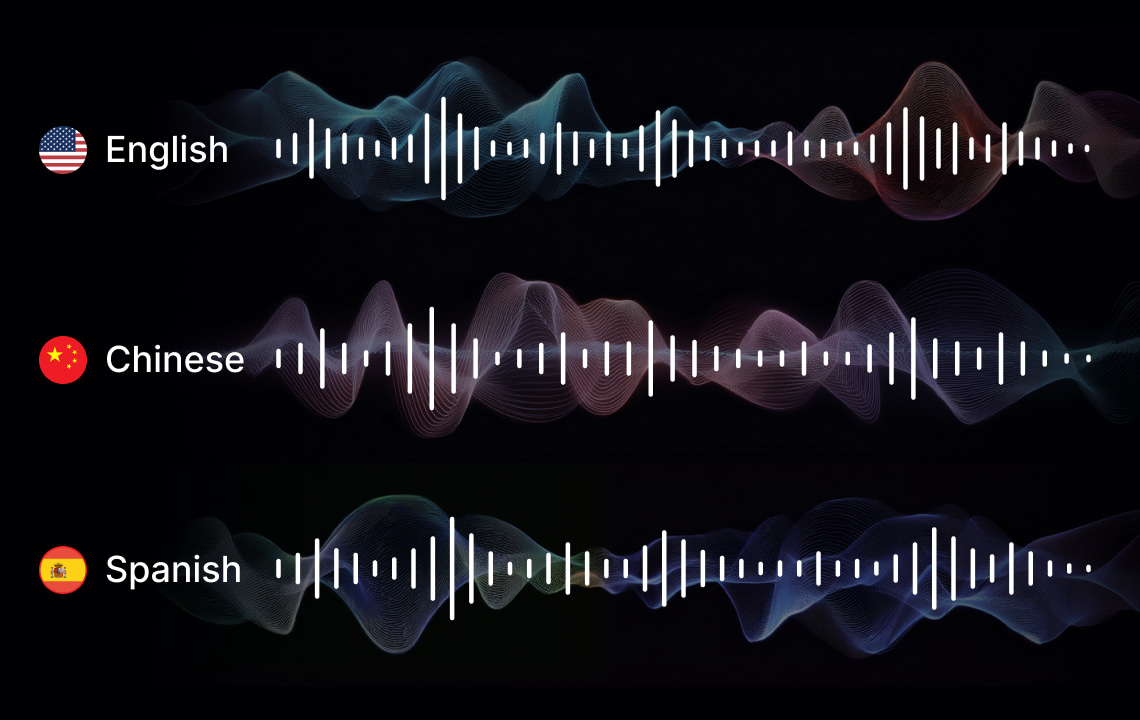
When precise German meets concise Chinese, or when the lyrical flow of Spanish encounters the reserved tone of Japanese — the efficiency gap between languages begins to reshape how we experience translated videos.
The Hidden Challenge of Global Video Translation
In today’s global media landscape, viewers often encounter a subtle dissonance:
the dubbed voice finishes too early or lags behind the visuals, breaking immersion.
Behind this lies an elegant linguistic truth — different languages transmit information at different rates.
The “Speed Game” of Human Language
A 2019 study in Science Advances (Coupé et al.) revealed that human languages have evolved toward a natural equilibrium.
Despite vast differences in information density — how much meaning is packed per syllable — most languages maintain a similar transmission rate of ~39 bits per second.
Despite vast differences in information density — how much meaning is packed per syllable — most languages maintain a similar transmission rate of ~39 bits per second.
In essence:
- High-density languages (e.g., Chinese, Vietnamese) express more meaning per syllable → slower pace.
- Low-density languages (e.g., Spanish, French, Japanese) require more syllables → faster speech.
- Medium-density languages (e.g., English, German) balance the two extremes.
“Languages are like vehicles — some take large, slow strides, others smaller, quicker ones — yet all move forward at roughly the same speed.” — The Economist (2019)
A Breakthrough: Dynamic Visual Pace Adjustment
Traditional dubbing systems focus on translation accuracy, ignoring rhythm differences.
Our Dynamic Visual Pace Adjustment system redefines synchronization: it analyzes information density between source and target languages and dynamically adjusts playback speed to ensure alignment as perfect as possible.
Our Dynamic Visual Pace Adjustment system redefines synchronization: it analyzes information density between source and target languages and dynamically adjusts playback speed to ensure alignment as perfect as possible.
Core Mechanism and Decision Logic
| Density Tier | Linguistic Traits | Example Languages |
| High | Compact, meaning-rich | Chinese (Mandarin, Cantonese), Vietnamese |
| Medium | Balanced structure | English, German, Korean, Russian |
| Low | Longer utterances, faster | Spanish, French, Italian, Japanese |
Rules (When you enable "Allow Adjustments to Video Speed" in your video translation task):
- Stretch when needed: From high/medium → low density (e.g., Chinese → Spanish, English → Japanese) or from high-density to medium-density (e.g., Chinese → English). → Slightly slow playback for longer translated speech.
- Keep pace: From low → high/medium (e.g., French → Chinese, Japanese → English). → Maintain original speed to avoid lag.
- Same-tier translation: Keep the natural rhythm unchanged.
A Subtle but Transformative Experience
- Seamless A/V synchronization — lip movements (When "Lip-Sync" is enabled after being translated) and emotions match naturally.
- Adaptive multilingual support — optimal pacing for each language pair.
- Context-aware optimization — ideal for documentaries, lectures, and corporate presentations.
Real-world Scenarios
1. Chinese Documentary → Spanish Dub
Issue: Translated narration takes ~30% longer.
Fix: Slightly slow down playback.
Result: Equal pacing and flow.
2. French Film → Chinese Dub
Issue: Chinese is more concise.
Fix: Keep original speed.
Result: Natural rhythm, no dead air.
3. English Tutorial → Japanese Version
Issue: Japanese has lower information density.
Fix: Mild visual stretching.
Result: Smooth, relaxed delivery.
Scientific Foundations
- Cross-linguistic research on 17 languages and 170 native speakers;
- Over 240,000 syllables analyzed from real speech;
- Model parameters continuously refined with new linguistic evidence.
Future Outlook
- Context-sensitive pacing — adjust based on genre (dialogue, narration, poetry, etc.);
- Personalized learning — adapt to user preferences;
- Real-time synchronization — dynamic tempo tuning within scenes.
Conclusion
In an age of global communication, true innovation comes not only from engineering but from understanding human diversity.
Dynamic Visual Pace Adjustment represents both — a marriage of linguistic insight and intelligent design.
When technology adapts to language diversity — rather than forcing humans to adapt to machines — we move toward a more inclusive and intelligent digital future, where every language can be heard, understood, and appreciated in its own rhythm.
References
- Coupé, C., Oh, Y. M., Dediu, D., & Pellegrino, F. (2019). Different languages, similar encoding efficiency: Comparable information rates across the human communicative niche. Science Advances, 5(9).
- Why are some languages spoken faster than others? (2019). The Economist.